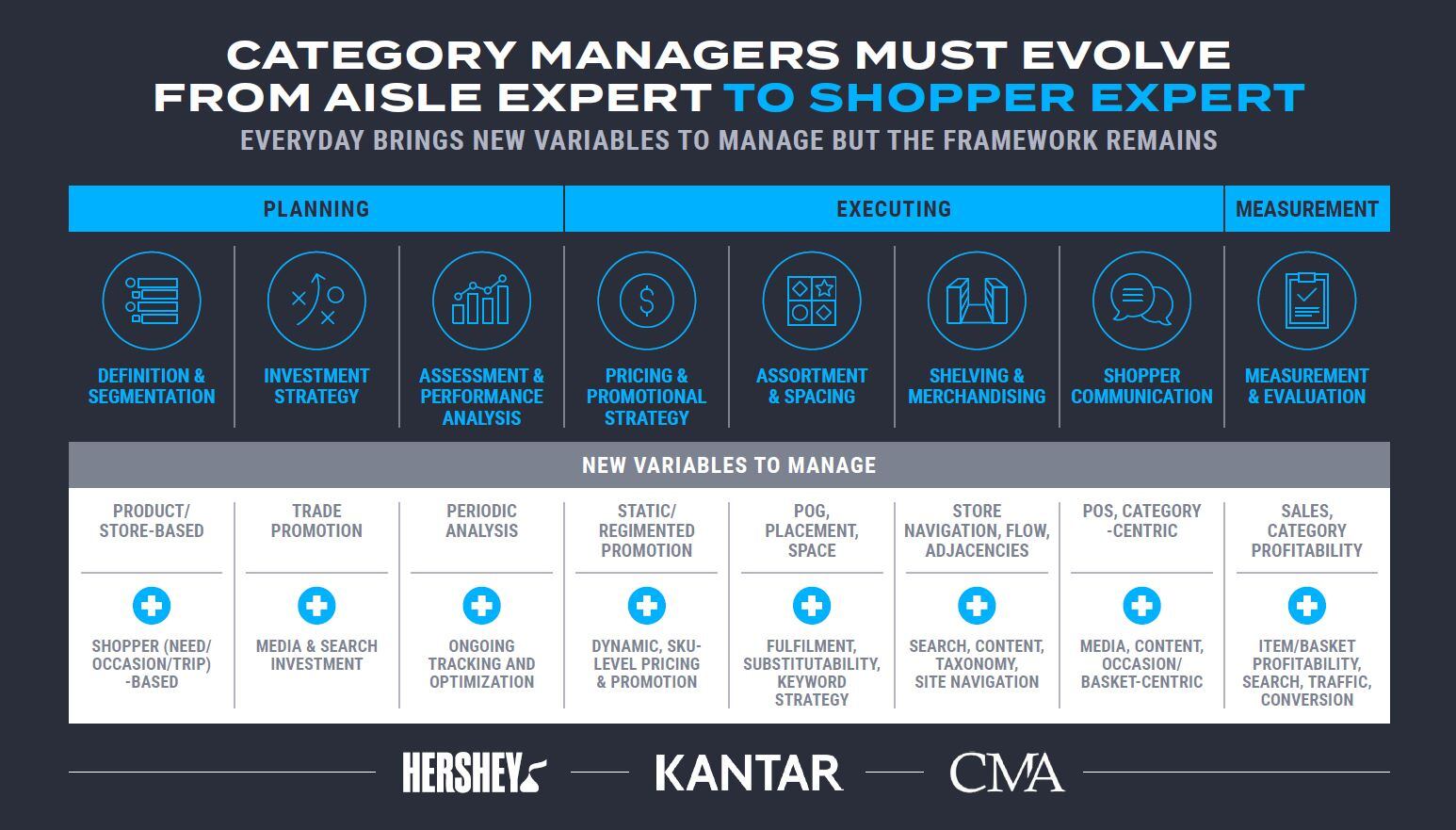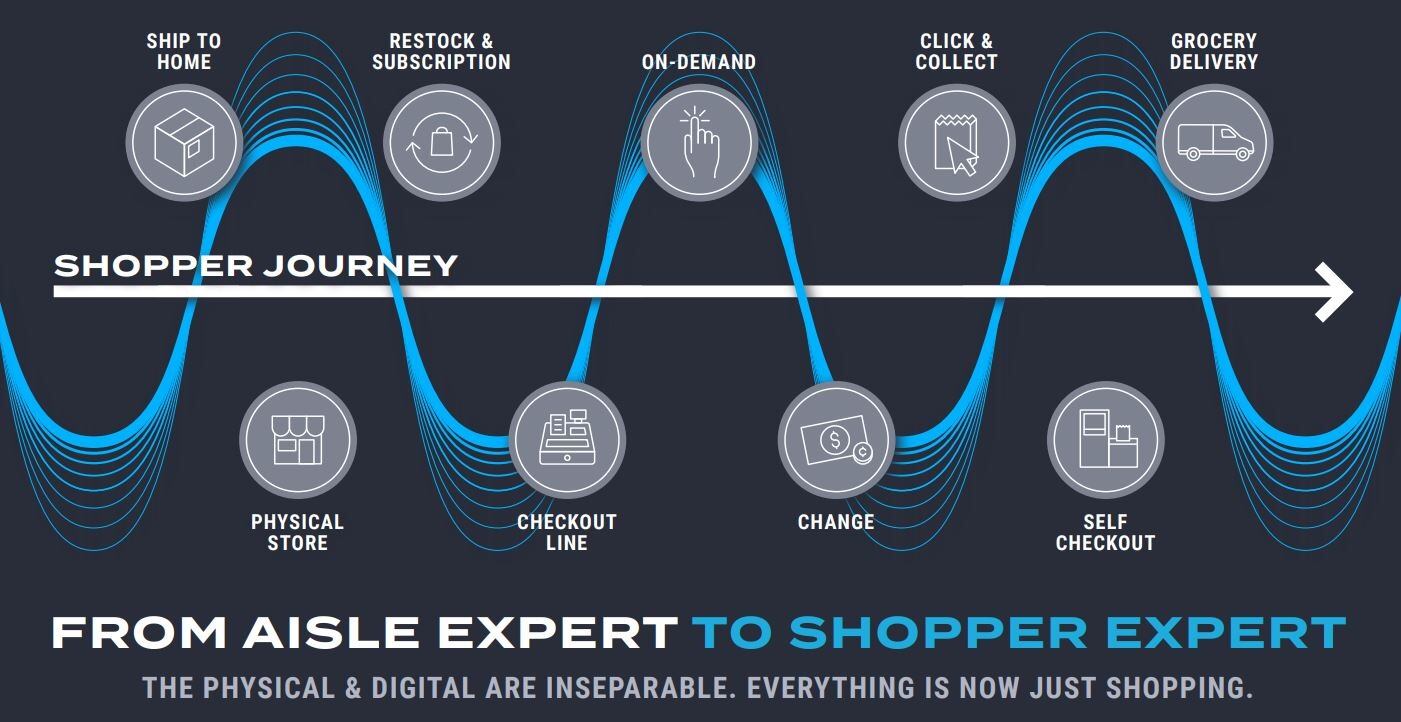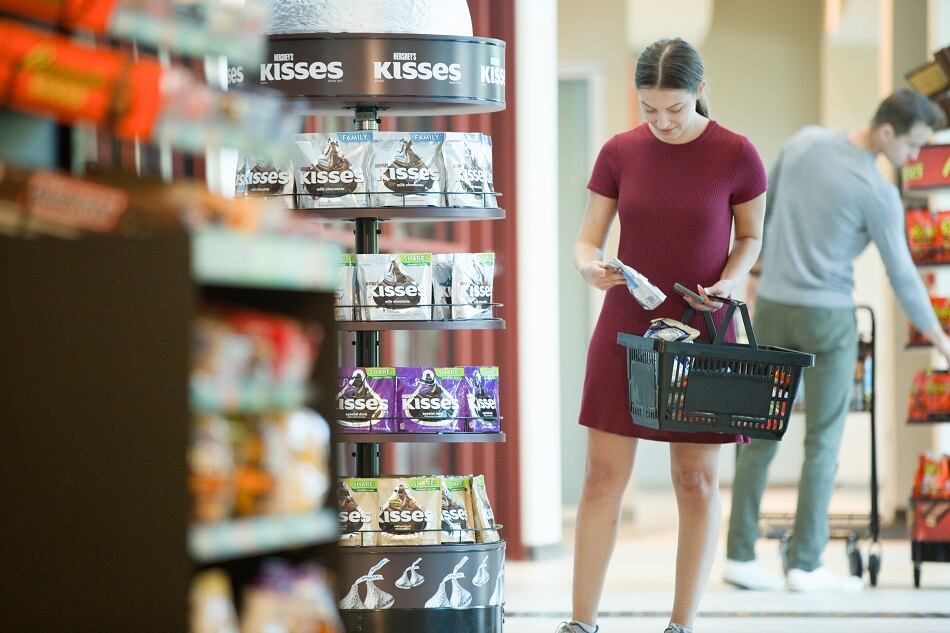“If there’s one thing that you walk away with it's that we’re putting the shopper in the center of everything we do. With that, the first trend is shopper expectations are changing,” said Nolen during a webinar hosted by Hershey last week.

Hershey, like the candy industry at large, has embraced many refreshed approaches to retail layouts such as transforming the checkout experience in order to encourage impulse purchases, and introducing more share packs, to stand-up packaging to make products more “findable” for consumers when wandering down the candy and snack aisle.
But as consumers continue to embrace online shopping and other retail channels such as c-store and drug to do their food shopping, traditional category management strategies have to evolve along with new consumer behavior, noted Nolen and Jonathan Young, executive VP at Kantar during the recent webinar.
“Almost two-thirds of food shoppers cross shop between brick and mortar and online. One in three in-store purchases start online, and one in four online purchases start in stores,” said Nolen.
“For us, this has dramatically changed the way in which we apply category management principles in terms of adjacency, flow, and space.”
Category management framework evolution
“The traditional category management framework needs to evolve to better reflect these new dynamics. As we look at the eight-step process, the key pillars of the traditional model are still relevant, but the approach needs to evolve in a few key ways,” said Young.
Traditional 8-step category management framework:

“With the shift to omnichannel retail, there are many more variables that now need to be incorporated into this eight-step process,” he added.
According to Young, instead of assessing the effectiveness of price and promotions on an annual basis, retailers and category managers should take advantage of the technologies that allow more frequent monitoring.
“This step in the process needs to shift from being more of an annual planning process with periodic measurement to more of an ongoing information loop that can evaluate some of the more dynamic data and uncover meaningful shifts that help form incremental changes along the way,” Young said.
“The big shift that we’re seeing in this area is from more of a static and siloed pricing environment to more of a dynamic and interconnected one. I think in the age of online dynamic pricing, pricing becomes more transparent and more connected across retailers.”
Assortment and spacing should also be constantly evaluated, and optimized, for both the physical and digital retail environment.
“The key is how do you drive that conversion, whether it be online or in the physical world. The key here is leveraging how do you make sure you increase that ‘findability’ with ease [for the shopper]. You have to be able to think about the more stratified retail landscape,” said Young.
Seamlessly integrate physical and digital
“The top ten retailers aren’t growing physical stores, they’re maintaining. Conversely, if you look at the small format – specifically value and c-stores – they’re growing stores. From a retail perspective, that’s the channel that’s getting bigger. Retailers are shifting capital not to new stores but are remodeling existing stores,” Nolen said.

“And you’re seeing some of the retailers report e-commerce sales upwards from 30-40% or even higher in some cases.
“The expectation to seamlessly integrate digital and physical commerce together. They want a similar experience in the physical world that they do online.”

